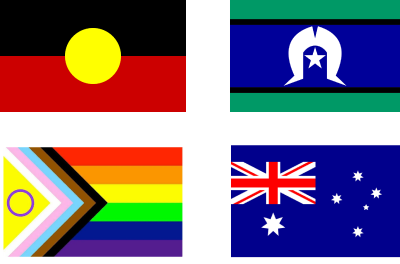
Written by Rachel Worsley
Authors: Julia Cook, Laura Crane, Laura Hull, Laura Bourne and William Mandy
Affiliations: University College of London, London, Great Britain; University of Bristol, Bristol, Great Britain
Journal: Autism
Funding: Julia Cook is funded by a doctoral scholarship from the University College of London.
In this research, published in 2022, researchers set out to discover how Autistic people use camouflaging to cope within a largely neurotypical world. They filmed 17 Autistic adults (8 women, 6 men and 3 non-binary people) who took part in a conversation with a stranger. These adults then completed a semi-structured interview about their camouflaging behaviours while viewing the video of their earlier social interaction.
The aim of this study was to broaden the current understanding of camouflaging by describing behaviours exhibited, altered or avoided by Autistic adults while camouflaging. The researchers have defined camouflaging “as the dynamic process through which Autistic individuals modify their innate Autistic social behaviour to adapt to, cope within and/or influence the predominately neurotypical social environment.”
They found 38 different camouflaging behaviours exhibited by the Autistic adults. These were classified into four categories: masking, innocuous engagement, modelling neurotypical communication and active self-presentation.
Examples of camouflaging behaviour from each category include:
Masking
Masking behaviours involve avoiding or limiting time speaking about oneself or disclosing personal information (e.g. information about one’s relationship, financial status, daily activities, special interests or hobbies) as well as avoiding specific facts and detailed information.
Masking also involves avoiding or suppressing Autistic or otherwise atypical hand or arm movements, such as stimming, fidgeting and rocking. Masking can also involve reducing body movements and changing one’s appearance. Some participants described specifically choosing not to disclose their Autism diagnosis or speak about Autism when in conversation with someone.
Innocuous engagement
Some participants used eye contact, mirroring, smiling, minimal verbal encouragers and laughing. Others reported engaging with their social partner in a deferential manner by apologising or providing excuses for their perceived social errors or poor social performance. Other behaviours include seeking approval, permission or validation, or avoiding confrontation, or being agreeable. Some participants described avoiding or limiting their use of honest or direct statements. Others tried to avoid the appearance of being knowledgeable or certain about specific topics or information.
Modelling neurotypical communication
Many participants reported altering their communication to appear more neurotypical including altering their use of gestures, body language, facial expressions or tone of voice. Others ensured their verbal communication was clear by rephrasing or slowing their speech, purposefully wording comments, or providing clarifying comments.
Active self-presentation
Most participants chose conversation topics that they were comfortable discussing or knowledgeable about, as well as pre-planned or practised phrases, comments, questions or anecdotes. Participants described using reciprocal social behaviours involving asking questions, commenting and providing elaborating information, establishing and discussing points of similarity and keeping a balance between talking and listening.
The study is the first to show how Autistic people use a range of camouflaging behaviours to cope when in conversation with someone. Autistic people engage in these behaviours to prevent prejudice and discrimination against their Autistic identity, as well as to avoid devaluation, rejection and misunderstanding. However, these behaviours come at a cost, such as decreased cognitive resources, decreased feelings of belonging and authenticity, and increased emotional strain. Knowing this information helps people to understand how to improve social outcomes for Autistic people, and to reduce prejudice and discrimination.
Find the original study here.

The Reframing Autism team would like to acknowledge the Traditional Owners of the lands on which we have the privilege to learn, work, and grow. Whilst we gather on many different parts of this Country, the RA team walk on the land of the Awabakal, Birpai, Whadjak, and Wiradjuri peoples.
We are committed to honouring the rich culture of the Aboriginal and Torres Strait Islander peoples of this Country, and the diversity and learning opportunities with which they provide us. We extend our gratitude and respect to all Aboriginal and Torres Strait Islander peoples, and to all Elders past and present, for their wisdom, their resilience, and for helping this Country to heal.